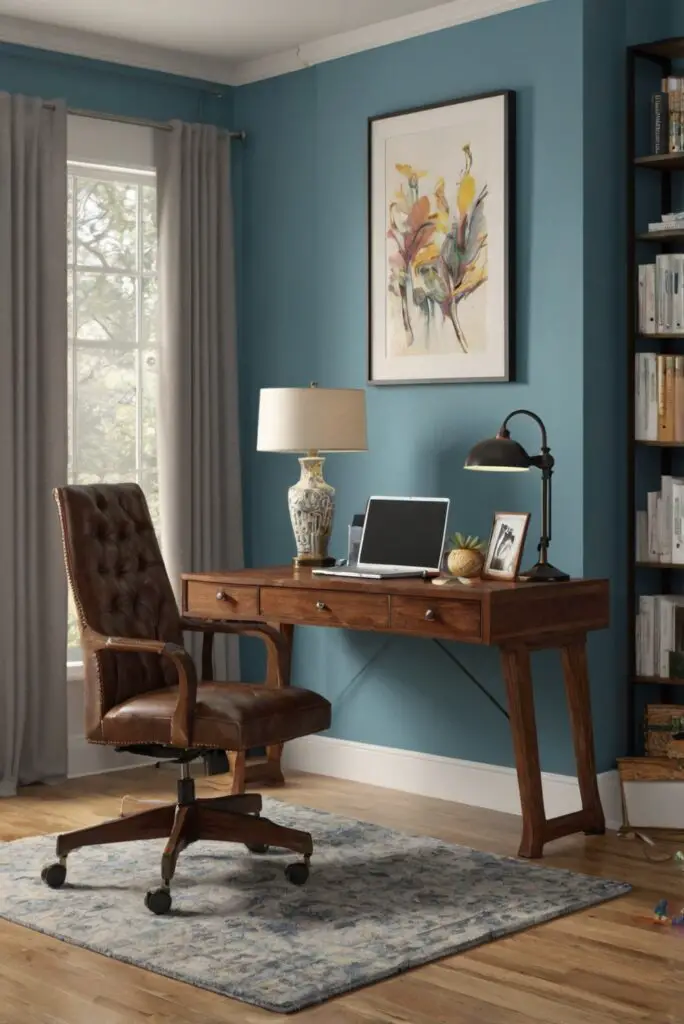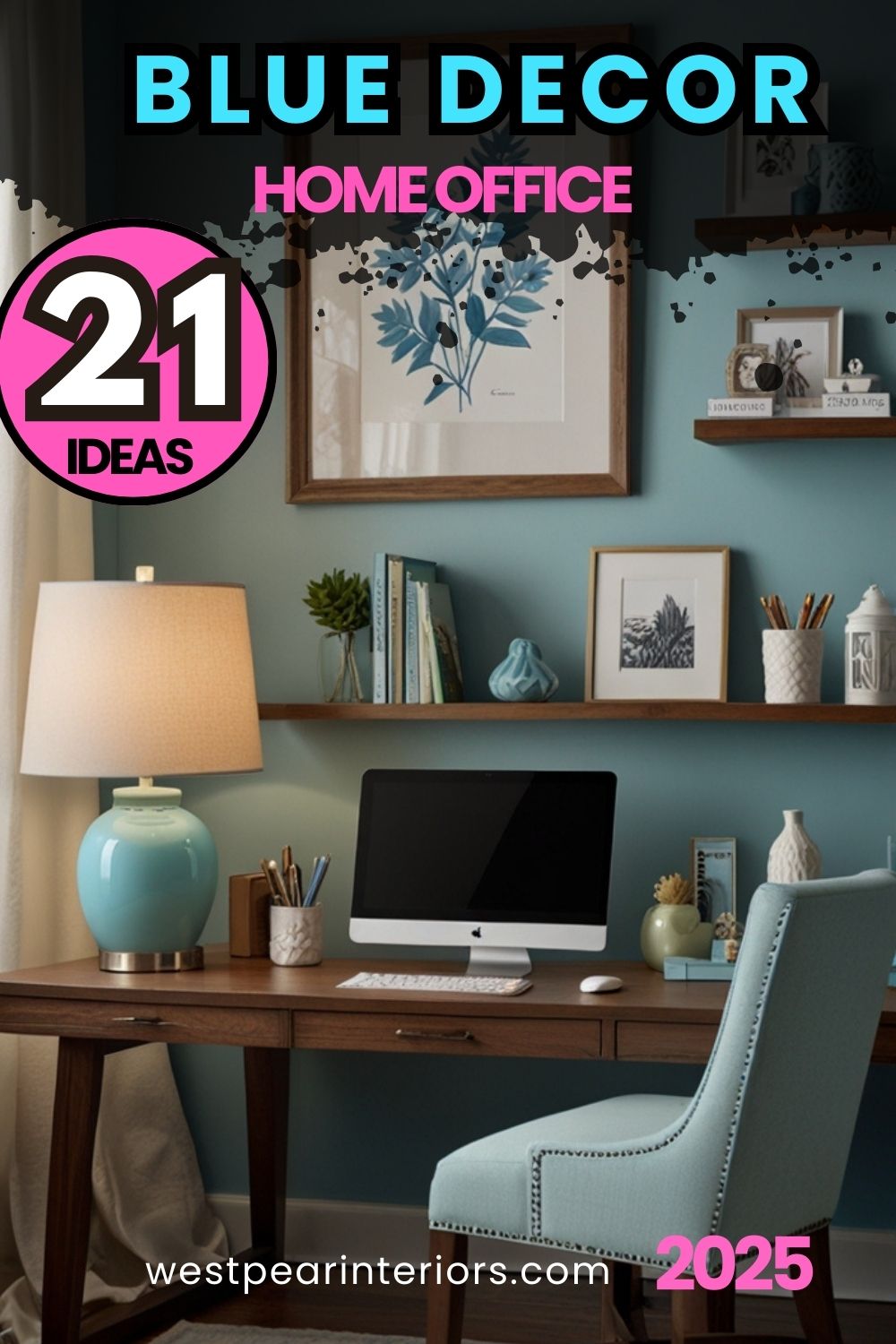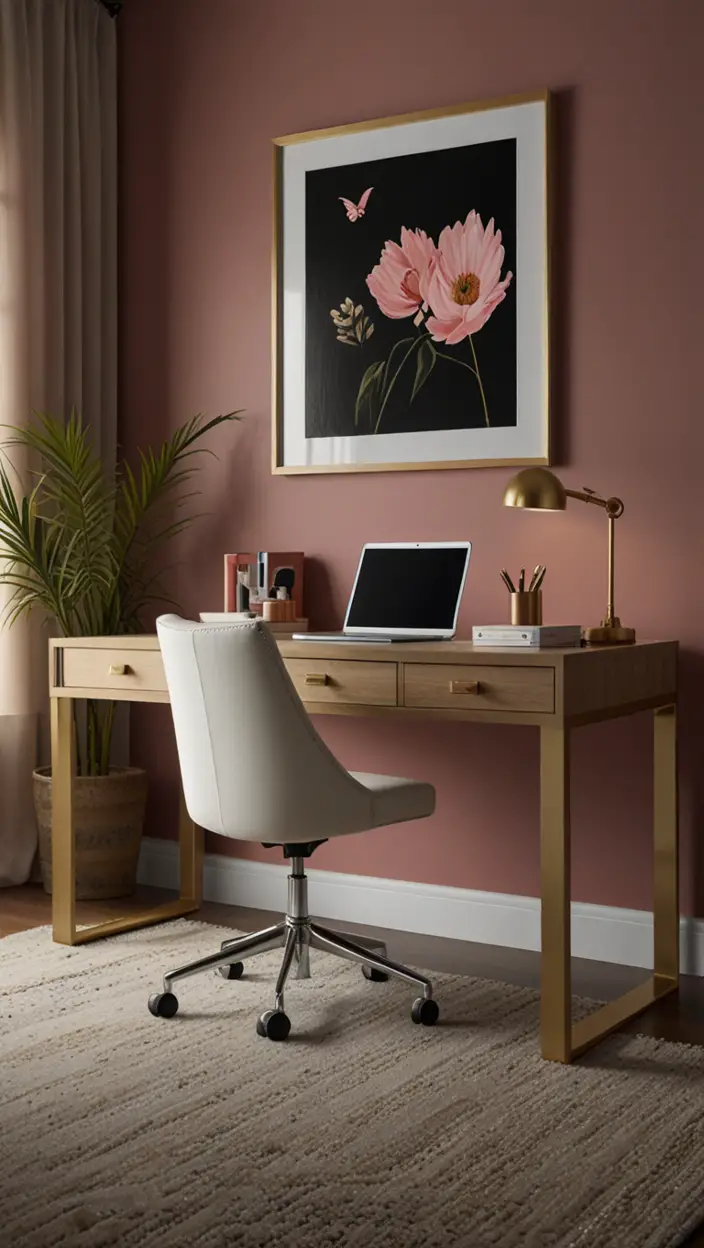Update your home office with a colorful twist – no renovation required! Discover secrets to transform your workspace effortlessly.
To update your home office without a major renovation, you can use color strategically. Start by selecting a color scheme that promotes productivity and suits your personal taste. For example, shades of blue are calming and increase focus, while greens can bring a sense of harmony. Consider painting an accent wall or adding colorful furniture pieces to introduce pops of color without overwhelming the space. Use primer paint for walls to ensure a smooth finish and proper color saturation. Don’t forget to match your wall paint with existing decor elements. This simple update can make a big difference in transforming your home office into a motivating work environment.
To incorporate a pop of color into your home office without undergoing a major renovation, consider the following tips:
My Lovely Spring Paint for 2025
Ready for a Spring Makeover? Explore the Freshest 2025 Paint Trends!
White Sage/Green SW Pistachio green Soft blue Honeysweet/Orange Pink Sugar Sage Tint BMAs an Amazon Associate, I may earn a commission from qualifying purchases at no extra cost to you.
1. **Accent Wall**: Painting one wall in a bold, vibrant color can instantly add a pop of color to your home office without overwhelming the space. Choose a wall that will serve as a focal point, such as the one behind your desk or a wall with minimal distractions.
2. **Colorful Accessories**: Add color through accessories like throw pillows, curtains, rugs, artwork, or decorative items. These accents are easy to switch out if you decide to change the color scheme in the future.
3. **Statement Furniture**: Introduce a colorful statement piece of furniture, such as a desk, chair, or shelf. This will add personality to your home office and serve as a focal point for the room.
My fAV Spring DECOR for 2025
Discover Spring’s Best 2025 Decor Combinations – Perfect for Any Room!
Oversized Indoor Plants White Curved Sofas Rugs BOH Brown Cream Moroccan Hype Boho Rug Outdoor Patio Furniture Sets Topfinel Pillow CoversAs an Amazon Associate, I may earn a commission from qualifying purchases at no extra cost to you.
4. **Plants**: Incorporating plants with colorful leaves or flowers can bring a refreshing touch of color to your workspace. Plants also have the added benefit of improving air quality and creating a lively atmosphere.
5. **Colorful Lighting**: Consider adding colorful lighting fixtures or lamps to brighten up your home office. This can create a cozy and inviting ambiance while adding a pop of color.
6. **Colorful Storage Solutions**: Opt for colorful storage bins, boxes, or containers to keep your office supplies organized. This not only adds color but also serves a practical purpose in maintaining a tidy workspace.
7. **Colorful Wall Art**: Hang vibrant and inspiring artwork on your walls to enhance the color scheme of your home office. Choose pieces that resonate with you and complement the overall aesthetic of the room.
When updating your home office color scheme, it’s essential to choose the right colors that work best for the space. Consider the following color schemes:
1. **Monochromatic**: Stick to varying shades of a single color for a cohesive and sophisticated look. This scheme is easy to work with and creates a sense of harmony in your home office.
2. **Complementary**: Pair colors that are opposite each other on the color wheel for a dynamic and visually appealing contrast. For example, blue and orange or purple and yellow can create a striking color scheme.
3. **Analogous**: Select colors that are adjacent to each other on the color wheel for a harmonious and calming effect. This scheme creates a seamless transition between colors, making your home office feel balanced.
4. **Neutral with Pops of Color**: Combine neutral tones like white, gray, or beige with pops of vibrant colors for a modern and fresh look. This allows you to experiment with different colors without overwhelming the space.
5. **Warm vs. Cool**: Differentiate between warm tones (reds, oranges, yellows) and cool tones (blues, greens, purples) to create a balanced and inviting atmosphere in your home office.
When mixing and matching different colors in your home office for a modern look, follow these guidelines for a cohesive color scheme:
1. **Color Wheel**: Use the color wheel to identify complementary, analogous, or monochromatic color combinations that work well together. This tool helps you visualize how colors relate to each other and can guide your color choices.
2. **Tone and Intensity**: Pay attention to the tone and intensity of colors when mixing and matching. Ensure there is a balance between light and dark shades to create depth and visual interest in your home office.
3. **Limit the Palette**: Avoid using too many colors in a small space as it can be overwhelming. Stick to a few primary colors and incorporate different shades and tones of those colors for a cohesive and modern look.
4. **Texture and Pattern**: Mix colors through textures and patterns in furniture, textiles, and decor items. This adds dimension to your home office and prevents the space from looking flat or one-dimensional.
5. **Test Swatches**: Before committing to a color scheme, test swatches on your walls to see how they look in different lighting conditions. This allows you to make informed decisions and avoid any color regrets.
Choosing the right paint colors to freshen up your home office involves consideration of the following factors:
1. **Natural Light**: Take into account the amount of natural light in your home office when choosing paint colors. Lighter colors can make a small space feel more open and airy, while darker colors can add coziness but may require adequate lighting.
2. **Room Size**: Consider the size of your home office when selecting paint colors. Light colors can visually expand a small room, while dark colors can create a more intimate and inviting atmosphere in a larger space.
3. **Existing Furnishings**: Coordinate the paint colors with your existing furniture and decor in the home office. Ensure that the colors complement each other to create a cohesive and harmonious look.
4. **Personal Preference**: Choose paint colors that resonate with your personal style and preferences. Whether you prefer calming neutrals or energizing bright colors, the paint colors should reflect your personality and create a workspace where you feel comfortable and inspired.
5. **Focus Areas**: Determine if you want a specific area of your home office to stand out, such as the workspace, seating area, or storage. Use paint colors strategically to highlight these areas and create visual interest in the room.
For a cost-effective alternative to painting your home office for a color update, consider the following options:
1. **Removable Wallpaper**: Opt for removable wallpaper in a color or pattern that adds interest to your home office. This temporary solution allows you to experiment with different looks without the commitment of permanent paint.
2. **Decals and Stickers**: Use decals or stickers to add color to your walls or furniture. These affordable options come in various designs and can be easily removed or repositioned as needed.
3. **Fabric Panels**: Create fabric panels in colorful patterns and textures to hang on your walls. This DIY project is budget-friendly and allows you to customize the color scheme of your home office.
4. **Colorful Accessories**: Instead of painting the walls, focus on incorporating colorful accessories like throw pillows, curtains, rugs, and artwork. These accents can infuse color into your home office without the cost of a paint job.
5. **Repurpose Furniture**: Give existing furniture a fresh coat of paint in a new color to update your home office. This budget-friendly option can instantly transform the look of the space without the expense of buying new furniture.
To ensure that the color updates in your home office complement the existing decor, keep the following tips in mind:
1. **Color Palette Consistency**: Stick to a cohesive color palette that complements the existing decor in your home office. Choose colors that harmonize with the furniture, accessories, and finishes already present in the room.
2. **Balance of Colors**: Maintain a balance between the new colors you introduce and the existing colors in the space. Avoid overwhelming the room with too many conflicting hues and opt for a coordinated color scheme.
3. **Consider Contrast**: Create visual interest by incorporating colors that contrast with the existing decor. This contrast can add depth and dimension to your home office while highlighting key elements in the room.
4. **Tie in Accents**: Ensure that the new colors you introduce tie in with the accents and details in your home office. Coordinate colors in accessories, artwork, and textiles to create a cohesive and unified look.
5. **Neutral Foundation**: Use a neutral base color for the walls and larger furniture pieces as a backdrop for adding pops of color. Neutrals provide flexibility and allow colorful accents to stand out in the space.
When revamping the color scheme in your home office, here are some tips for staying organized throughout the process:
1. **Plan Ahead**: Create a color scheme and design plan for your home office before making any changes. This will help you stay organized and focused on executing your vision.
2. **Declutter**: Clear out any unnecessary items or clutter from your home office before updating the color scheme. Organize your space to create a clean canvas for the color revamp.
3. **Label and Sort**: Use labels and storage containers to keep track of paint samples, fabric swatches, and color references. Organize materials by category to streamline the decision-making process.
4. **Set a Timeline**: Establish a timeline for completing the color updates in your home office. Break down the project into manageable tasks and set deadlines to stay on track with your makeover.
5. **Test Before Committing**: Test paint colors, fabric samples, and accessories in your home office before making final decisions. This allows you to visualize how the colors will look in the space and make adjustments as needed.
6. **Maintain a Mood Board**: Create a mood board with color swatches, fabric samples, and inspiration images to guide your color updates. Refer to the mood board throughout the process to ensure consistency and cohesion in the design.
7. **Evaluate Progress**: Regularly assess the progress of your color updates and make any necessary adjustments along the way. Step back and review the changes to ensure they align with your vision for the home office.
In conclusion, using color to update your home office can be a transformative process that refreshes the space and enhances productivity. By incorporating pops of color through accent walls, accessories, statement furniture, and colorful lighting, you can infuse personality and energy into your workspace. When choosing color schemes, consider monochromatic, complementary, analogous, or neutral with pops of color options to create a cohesive and harmonious look. Experiment with mixing and matching different colors while considering tone, intensity, and texture to achieve a modern and vibrant color scheme.
Opting for cost-effective alternatives like removable wallpaper, decals, fabric panels, and repurposing furniture can provide color updates without the expense of a full paint job. Focus on coordinating the new colors with the existing decor, maintaining balance, contrast, and tying in accents to create a cohesive and inviting home office. Stay organized throughout the revamp process by planning ahead, decluttering, labeling and sorting materials, setting a timeline, testing before committing, maintaining a mood board, and regularly evaluating progress.
Key Takeaways:
– Incorporate a pop of color in your home office through accent walls, colorful accessories, statement furniture, plants, colorful lighting, storage solutions, and wall art.
– Choose color schemes like monochromatic, complementary, analogous, neutral with pops of color, or warm vs. cool to update your home office space.
– Mix and match different colors in your home office by using the color wheel, balancing tone and intensity, limiting the palette, and incorporating texture and pattern.
– Select the right paint colors based on natural light, room size, existing furnishings, personal preference, and focus areas to freshen up your home office.
– Explore cost-effective alternatives to painting, such as removable wallpaper, decals, fabric panels, colorful accessories, and repurposing furniture for color updates.
– Ensure that color updates complement existing decor by maintaining color palette consistency, balancing colors, considering contrast, tying in accents, and using a neutral foundation.
– Stay organized during the color revamp process by planning ahead, decluttering, labeling and sorting, setting a timeline, testing before committing, maintaining a mood board, and evaluating progress regularly.






